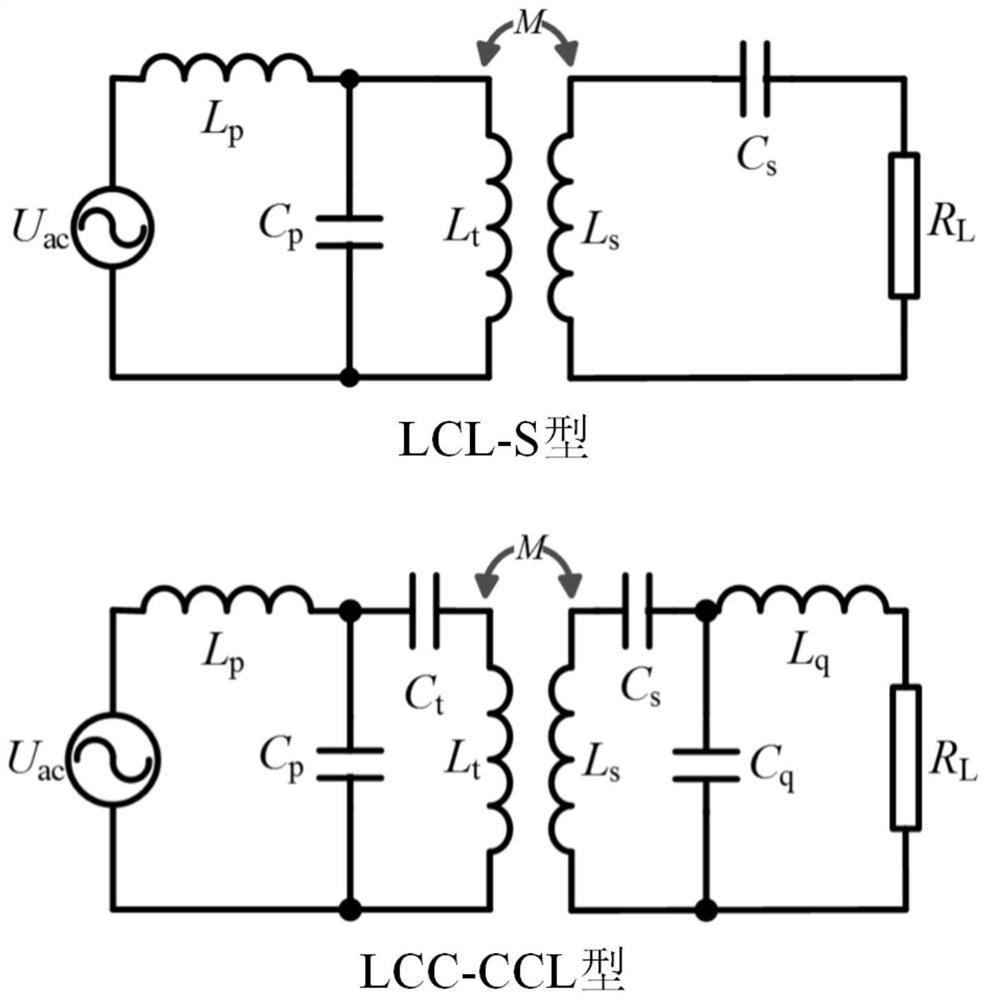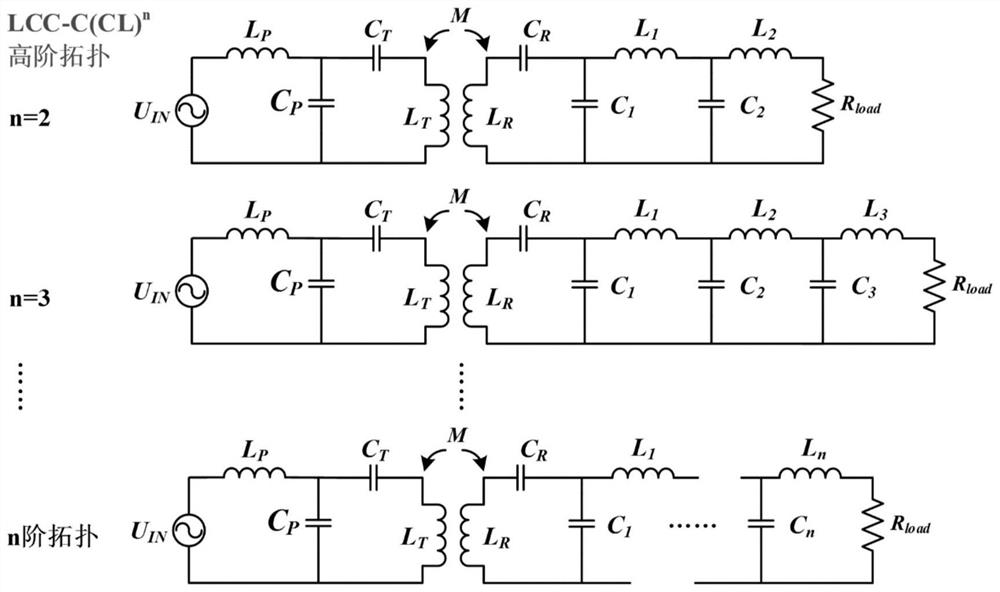Receiving end high-order LC compensation magnetic resonance wireless power transmission system
A wireless power transmission and receiving end technology, applied in control/regulation systems, high-efficiency power electronic conversion, electrical components, etc., can solve the problems of poor system transmission stability, low system transmission efficiency, inability to apply variable load charging mode, etc. Efficiency smoothness, high efficiency effect
- Summary
- Abstract
- Description
- Claims
- Application Information
AI Technical Summary
Problems solved by technology
Method used
Image
Examples
Embodiment 1
[0049] A magnetic resonance wireless power transmission system with high-order LC compensation at the receiving end, such as figure 1 shown, including: transmitter and receiver;
[0050] The transmitting end includes a transmitting end compensation network and a transmitting coil L T , the transmitter compensation network is connected to the transmitter coil L T , the AC signal is input to the transmitter compensation network, the transmitter compensation network converts the input electrical energy into high-frequency voltage and current signals, and the high-frequency voltage and current signals are input to the transmitter coil L T , the transmitter coil L T Sending electric energy, the current in the transmitting coil presents a constant current characteristic through the transmitting end compensation network, and the transmitting coil transmits the electric energy to the receiving coil through magnetic coupling;
[0051] The receiving end includes a receiving coil L R...
Embodiment 2
[0054] On the basis of Example 1, as figure 1 As shown, the transmitter compensation network in this embodiment is an LCC series-parallel resonant network, and the transmitter also includes an inverter circuit. The input end of the inverter circuit is connected to the DC power supply, and the output end of the inverter circuit is connected to the transmitter compensation network. The inverter circuit Convert DC input to AC signal output. The inverter circuit is a full-bridge inverter circuit, and the inverter circuit includes a MOS transistor Q 1 , MOS transistor Q 2 , MOS transistor Q 3 and MOS transistor Q 4 ;MOS transistor Q 1 the drain and MOS transistor Q 3 The drain connection of the MOS transistor Q 2 The source and MOS transistor Q 4 The source is connected, MOS transistor Q 1 The source is connected to the MOS transistor Q 2 drain, MOS transistor Q 3 The source is connected to the MOS transistor Q 4 drain, MOS transistor Q 3 the drain and MOS transistor Q ...
Embodiment 3
[0058]In the wireless power transmission system, in order to realize the same frequency resonance of the inductance of the receiving coil and the transmitting coil and improve the power and efficiency of the system energy transmission, it is necessary to compensate the transceiver coil at the same time by adding a compensation network to the transceiver mechanism. The compensation network plays a vital role in the magnetic resonance coupled wireless charging system. The configuration of the bilateral compensation network parameters of the transceiver mechanism can change the equivalent impedance characteristics of the system, thereby minimizing the reactive power of the system and improving the The overall power factor of the system and increase the coupling between the transceiver coils. There are four basic topological structures S-S, S-P, P-P, and P-S in the compensation network according to the difference in the series-parallel combination of the bilateral compensation netw...
PUM
 Login to View More
Login to View More Abstract
Description
Claims
Application Information
 Login to View More
Login to View More - R&D
- Intellectual Property
- Life Sciences
- Materials
- Tech Scout
- Unparalleled Data Quality
- Higher Quality Content
- 60% Fewer Hallucinations
Browse by: Latest US Patents, China's latest patents, Technical Efficacy Thesaurus, Application Domain, Technology Topic, Popular Technical Reports.
© 2025 PatSnap. All rights reserved.Legal|Privacy policy|Modern Slavery Act Transparency Statement|Sitemap|About US| Contact US: help@patsnap.com



